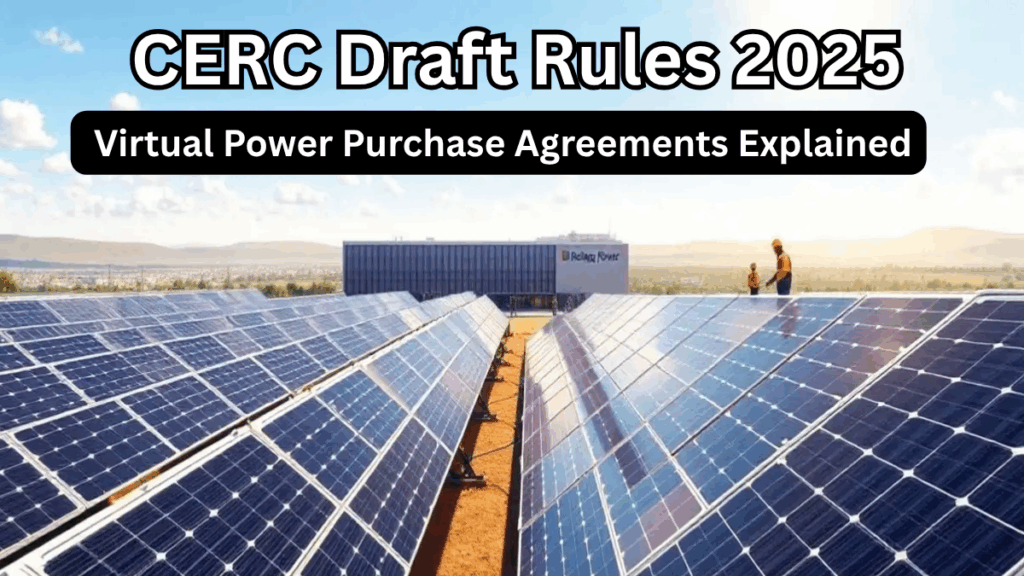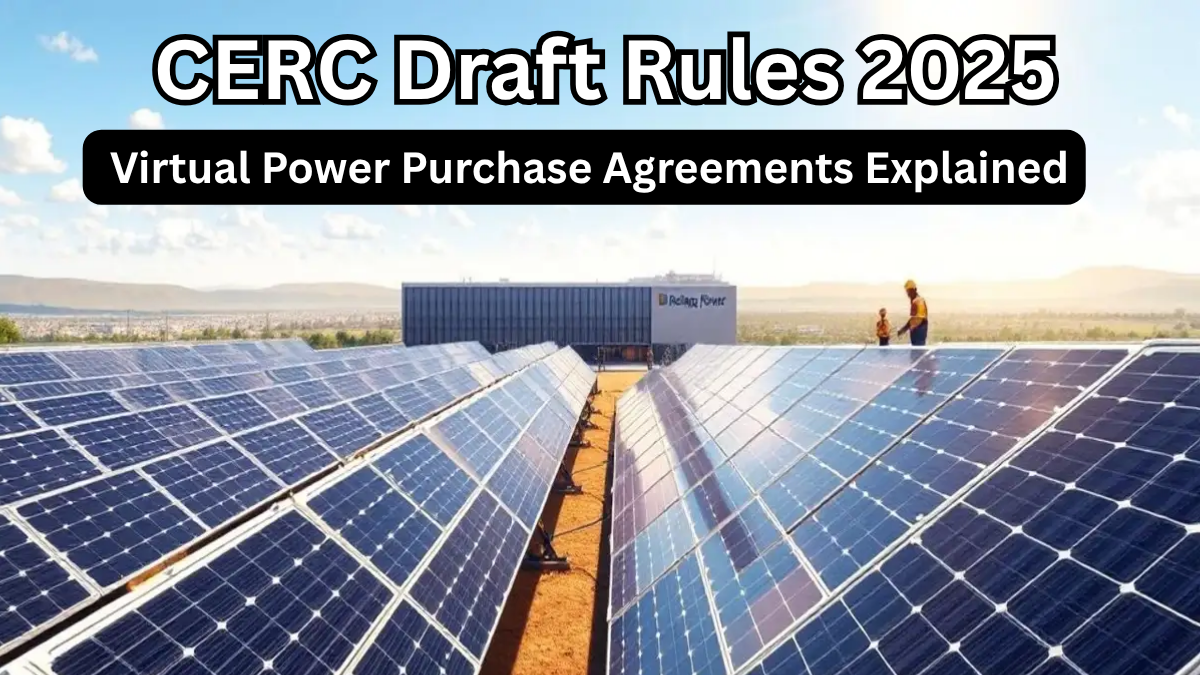The Central Electricity Regulatory Commission (CERC) has released the India Virtual Power Purchase Agmts Rules 2025, opening the door for a new way of buying and selling electricity. These draft guidelines aim to create a VPPA electricity trading framework that makes renewable energy more accessible, flexible, and transparent for businesses and consumers.
But what exactly are Virtual Power Purchase Agreements (VPPAs), and why do they matter? Let’s break it down in simple terms.

What Are Virtual Power Purchase Agreements?
A Virtual Power Purchase Agreement (VPPA) is not about physically receiving electricity at your doorstep. Instead, it’s a financial contract between a power producer (usually a renewable energy developer) and a buyer (often a large company).
-
The producer sells power at a pre-agreed price.
-
The buyer doesn’t receive this power directly but gets financial settlements based on market prices.
-
This allows businesses to support renewable energy without being tied to a particular location or grid.
In short, VPPAs make it possible for companies to “go green” virtually—without having to set up or maintain physical energy infrastructure.
Key Highlights of the India Virtual Power Purchase Agmts Rules 2025
The CERC’s draft lays out a clear VPPA electricity trading framework, ensuring better participation from businesses and energy providers.
Here’s what stands out:
-
Open for Corporates: Large and medium enterprises can now engage in renewable energy trading through VPPAs.
-
Market-Linked Prices: Buyers will settle differences between the contract price and the market price.
-
Encouraging Renewable Projects: Developers get more buyers, increasing investments in wind, solar, and hybrid power projects.
-
Risk Management: Helps businesses hedge against electricity price fluctuations.
Why Are These Rules Important?
The India Virtual Power Purchase Agmts Rules 2025 are a game-changer for businesses and renewable developers. They bring:
-
Flexibility: Companies can support green energy without being tied to one location.
-
Cost Efficiency: Businesses can save money by locking in electricity prices.
-
Boost for Renewables: More buyers mean more renewable energy projects.
-
Transparency: CERC aims to make the entire process regulated and safe for all participants.
How Will VPPAs Work?
Here’s a simplified view of the VPPA mechanism:
| Step | What Happens? |
|---|---|
| 1. Contract Signing | A buyer and a renewable developer agree on a fixed electricity price. |
| 2. Power Generation | The developer generates renewable energy and sells it to the grid. |
| 3. Market Settlement | The difference between the market price and the agreed VPPA price is settled financially. |
| 4. Buyer Benefits | The buyer claims renewable energy credits (RECs) and achieves sustainability goals. |
What Does It Mean for Businesses?
-
No physical power setup required – Ideal for companies across industries.
-
Sustainability goals made easier – Claim RECs and boost your ESG score.
-
Hedging tool – Mitigate risks from volatile electricity prices.
-
Competitive advantage – Position your brand as environmentally conscious.
FAQs
1. Who can participate in VPPAs under these draft rules?
Medium and large businesses, along with institutional buyers, can participate in the VPPA electricity trading framework.
2. How do buyers benefit if they don’t physically receive electricity?
They gain financial settlements and renewable energy credits (RECs), helping them meet sustainability and cost-saving targets.
3. Are these agreements limited to renewable energy?
Yes, VPPAs primarily aim to boost renewable energy adoption such as solar, wind, and hybrid projects.
4. When will the India Virtual Power Purchase Agmts Rules 2025 take effect?
These are currently draft rules; after consultations, the final guidelines will be implemented by CERC in 2025.
Click here to learn more
